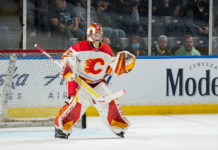Numerous intangible and tangible things can impact the
progression of a youth baseball player. Learning to field, throw
and hit become the focal points toward becoming a well rounded
athlete on the baseball diamond. Every off season and pre-season,
thousands of hours are spent perfecting those skills.
Parents, coaches and players shouldn’t forget, however, that
motor skills, core strength, balance , agility and conditioning
also play an important role in supporting the three major skills
needed to play baseball. By developing some core strength it makes
it somewhat easier to accomplish and a
cquire the technique needed to throw, hit and catch. Let’s
start with conditioning and cardiovascular training. And let’s face
the facts. Most kids are not in the shape they could be. Time to
get away from the X-Box and get outdoors. By no means do they need
to qualify for the Boston Marathon
, but some long distance running will help their stamina as the
game gets into the later innings. A few laps around a track, riding
a bike around the neighborhood, swimming in a pool or playing a fun
full court game of basketball a few times a week are great ways to
increase a player’s conditionin
g. Do different things on different days. Varied activities
makes getting in shape a lot more fun. Core strength can be
developed by doing push ups, sit ups, pull ups and simulated squats
for the legs. Push ups strengthen the back, shoulders, chest and a
little bit of the triceps. Three sets of 1
0-15 repetitions three times a week will start to develop some
overall power for your young athlete. Sit ups and pull ups can
follow the same regimen. Simulated squats are done by bending the
legs and trying to sit down in an imaginary chair and then
returning to the starting position. Arms should b
e extended out in front and away from the body. A simple
exercise to increase strength in the forearm is by squeezing a
tennis ball or soft rubber baseball. Most hitters in the major
leagues possess a lot of strength in their forearms. Squeezing a
ball also makes the wrists stronger, thus providi
ng a little more snap in your throws. Agility and balance can
be achieved by jumping rope, running short 40 yard sprints, hopping
on one foot around a designated one foot area or by participating
in other sports such as soccer or the martial arts. Motor skills
can be enhanced by playing catch wit
h large plyometric balls, kicking a ball or any hand eye
coordination exercise. Many times over the course of the season
we ask youth baseball players to perform skills during the game
that maybe they can’t do. It’s not because they don’t know how to
do that skill. It’s probably because t
hey’re tired, not in shape, not coordinated, or not strong
enough to achieve what you want them to do. With a little work
ethic away from the field that can all change.
Numerous intangible and tangible things can impact the progression of a youth baseball player. Learning to field, throw and hit become the focal points toward becoming a well rounded athlete on the baseball diamond. Every off season and pre-season, thousands of hours are spent perfecting those skills.
Parents, coaches and players shouldn’t forget, however, that motor skills, core strength, balance , agility and conditioning also play an important role in supporting the three major skills needed to play baseball. By developing some core strength it makes it somewhat easier to accomplish and acquire the technique needed to throw, hit and catch.
Let’s start with conditioning and cardiovascular training. And let’s face the facts. Most kids are not in the shape they could be. Time to get away from the X-Box and get outdoors. By no means do they need to qualify for the Boston Marathon, but some long distance running will help their stamina as the game gets into the later innings. A few laps around a track, riding a bike around the neighborhood, swimming in a pool or playing a fun full court game of basketball a few times a week are great ways to increase a player’s conditioning. Do different things on different days. Varied activities makes getting in shape a lot more fun.
Core strength can be developed by doing push ups, sit ups, pull ups and simulated squats for the legs. Push ups strengthen the back, shoulders, chest and a little bit of the triceps. Three sets of 10-15 repetitions three times a week will start to develop some overall power for your young athlete. Sit ups and pull ups can follow the same regimen. Simulated squats are done by bending the legs and trying to sit down in an imaginary chair and then returning to the starting position. Arms should be extended out in front and away from the body.
A simple exercise to increase strength in the forearm is by squeezing a tennis ball or soft rubber baseball. Most hitters in the major leagues possess a lot of strength in their forearms. Squeezing a ball also makes the wrists stronger, thus providing a little more snap in your throws.
Agility and balance can be achieved by jumping rope, running short 40 yard sprints, hopping on one foot around a designated one foot area or by participating in other sports such as soccer or the martial arts. Motor skills can be enhanced by playing catch with large plyometric balls, kicking a ball or any hand eye coordination exercise.
Many times over the course of the season we ask youth baseball players to perform skills during the game that maybe they can’t do. It’s not because they don’t know how to do that skill. It’s probably because they’re tired, not in shape, not coordinated, or not strong enough to achieve what you want them to do. With a little work ethic away from the field that can all change.







